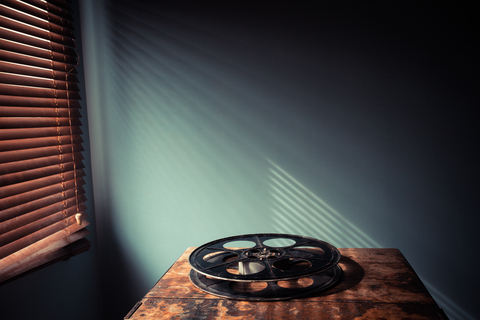Top Ten Thrillers which were adapted into Films
There are famous examples of thrillers that improve on the source novel, but more often even a good film version falls short. This top ten is ordered chronologically.
The Riddle of the Sands (1903) is famous mainly because it is seen as the first proper espionage novel. It is also unexpectedly well written, and the relationship between the two young heroes is complex and charming. Sadly, the 1979 film version hasn’t even one thing to recommend it.
My next choice is something of a cheat. The Murder of Roger Ackroyd (1926) has only been made as a TV film. Perhaps this misguided effort served as a warning to potential filmmakers of the particular difficulties of adapting Agatha Christie’s early crowning glory. That a writer of popular mysteries who wrote efficiently but without noticeable artistry should suddenly take on the creative challenge of an unreliable narrator with such stunning success probably guaranteed her reputation, even if she had not gone on to write another sixty bestsellers. If by any remote chance you have not read it but saw the TV movie and dismissed it as another run-of-the-mill Poirot mystery, then trust me; get the book.
The film version of The Mask of Dimitrios (1939) isn’t at all bad. How could it be when it stars Peter Lorre and Sydney Greenstreet? Made just five years after Eric Ambler’s 1939 success, in style as well as casting, Warner Brothers clearly thought it would be another Maltese Falcon, but not quite. The novel is marvelous, showcasing Ambler’s crisp, politically intelligent, man-of-the-world style in this influential tale of the nexus between murderous criminality and international corporate crime.
The Cellars of the Majestic (1942) has the considerable virtues of simplicity and astonishing economy. Simenon not only gives us a splendid murder mystery and the genuine pleasure of M. Maigret’s company, but also manages to excavate the workings of class in 1930’s Paris in a novel that won’t take much more time to read than to watch the underwhelming 1945 French film version.
No comparison between the two experiences.
There’s nothing wrong with the 1999 film of The Talented Mr. Ripley (1955). I like it a lot. But there is too much Minghella and not enough Highsmith for my taste. I’m not talking plot alterations; I’m talking tone. The homoeroticism and the luscious recreation of 1950’s Italy are sentimental in a way that Highsmith never is. I prefer the acidity, the layers of cynicism, and the clear-headed deconstruction of corrupted white-male privilege that is the heart of the book.
Two versions of The Getaway (1958) show the best (1972) and worst (1994) of film adaptation. Hopefully, both will tempt people to read the novel and discover just how clean, hard, smart, economical, and addictive Jim Thompson’s prose is. Short and great.
Fleming was inspired by Connery’s iconic performance in Dr. No to breathe new life into his writing of Bond in On Her Majesty’s Secret Service (1963), including the little joke of having him go undercover as a Scotsman. But in the film version Connery was replaced by George Lazenby, leaving fans with a frustrating what-might-have-been.
Tinker, Tailor, Soldier, Spy (1974). The film is excellent, as several other film and TV adaptations of his work have been, but honestly, the particular genius of le Carré can only be savored by long, lingering sessions in a comfy armchair in the company of the incomparable George Smiley, the reader eager for answers and yet half hoping this melancholy dissection of betrayal will never end.
McEwan is how I like him best in The Comfort of Strangers (1981), slow-burning, atmospheric, and deeply unsettling. The cast for the film (Walken, Everett, Richardson) seemed perfect, but sometimes the greatness is in the prose and no film version can rise to the challenge.
It seemed inevitable that Miss Smilla’s Feeling for Snow (1990) would become a great film, but it wasn’t to be. Smilla is one of the great thriller heroines and Julia Ormond, a fine actress, was simply all wrong for the role. Better to re-read the book and let Hoeg’s Smilla and Hoeg’s landscape feed your imagination.

